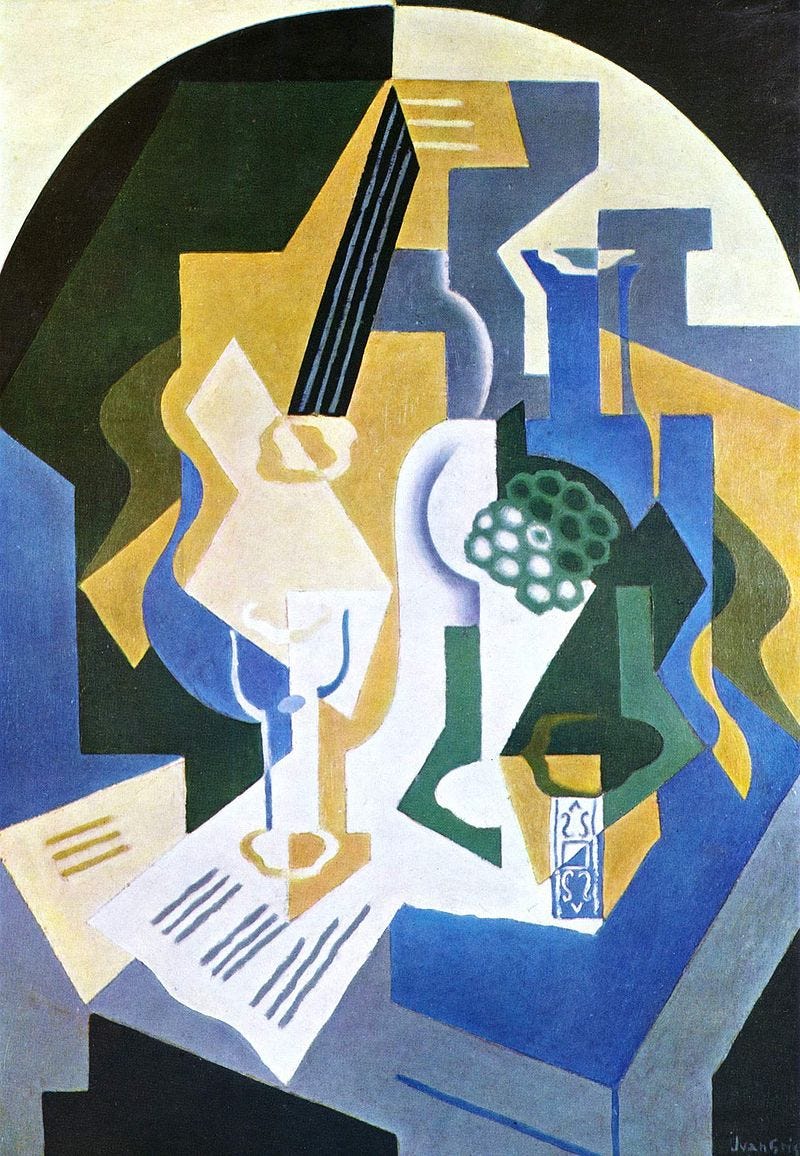🏷️ Categories: Creativity
Many people think that creativity is something you are born with: either you have it, or you don't.
The truth is that creativity is a habit and can be trained.
A Bit of History
The idea of creativity is not as ancient or universal as it might seem.
In classical Greece, there was no term for "create"; only "poiein" was used, and it referred to poetry. From this comes "poets" ("poietes"). Plato rejected the idea that artists "created"; he said they merely imitated (Tatarkiewicz, 1980).
Creating from nothing was a task for the gods, which is why they had the muses, the mediators between gods and mortals who visited humans to reveal ideas (Pritzker, 1999).
The current concept of creativity began in the Renaissance when creation was perceived as the result of human genius (Albert & Runco, 1999).
What is Creativity?
As mentioned, it is not innate; it is simply a behavior, a way of acting.
Creativity is the association of stimuli or elements that were not previously associated. So, if we get used to connecting concepts, we will get used to being creative. This applies both artistically and generally.
According to Cyert & March (1963), these are the three behaviors that stimulate creativity:
1. Observe and Question:
Develop the habit of analyzing your environment and seeking alternatives to objects and situations you already know. Analyze how you and others interact with the surroundings. This may sound theoretical, so let’s see some examples:
Ford's Assembly Line: Ford combined two previous concepts: the traditional vehicle manufacturing process + new machines used in factories.
Cubism: This artistic style's most original characteristic was abandoning drawing perspective to represent forms using geometric figures from various simultaneous perspectives. It happened again: geometry + reality.
2. Test Ideas:
When you have ideas, bring them to life and analyze the results. Share your idea and listen to opinions. Creative people are in constant iteration; they don’t limit themselves and explore further. There are countless examples; every artist is testing every time they create.
Two paintings by Picasso. Do they look alike?
40 years of difference between one painting and the other.
40 years testing ideas, exploring, and observing what the audience says.
That’s the key point.
3. Tolerate Rejection:
We tend to value the loss of something we already have more than the possible gain of something new. This is called "loss aversion" (Kahneman et al., 1991).
Following Picasso's example: Avant-garde art had poor initial reception; nobody understood it.
Ortega y Gasset (Spanish philosopher) said: "If someone, after seeing the exhibition halls, said: ‘This is nothing, there is no art here,’ I would say: ‘You are right, this is not yet art. But, could you tell me what thing is better to try? If you were 25 years old and had a dozen brushes in your hand, what would you do?’"
Understand that even if you have good ideas, it may take time for them to shine.
4 Biases That Hinder Creativity
We’ll use the book "Decisive" by Chip and Dan Heath (2014) for this section. A highly recommended book if you want to investigate further.
1. Considering Few Options:
Often, we think in binary (yes/no), and sometimes we decide too quickly.
This happens because you are thinking in "system 1" (Kahneman, 2012). That is, you think quickly just to find an idea or solution as soon as possible, and for that, you rely on what you remember the fastest and has worked the most times.
Having few options causes strong dissatisfaction with the final result because you feel you missed your potential.
2. Confirmation Bias:
We tend to seek information that confirms our beliefs and undervalue information that challenges them. You risk falling in love with your idea and being unable to see its flaws or points for improvement.
3. Emotions:
We settle for ideas that make us feel good and already work because uncertainty makes us uncomfortable. The risk of public failure or the fatigue of adapting to something new are emotions that hinder creativity.
4. Overconfidence in One's Own Perspective:
The phrase "thinking outside the box" makes me laugh because it's impossible.
You are the box; your brain is the box filled with your life. Whenever you imagine, you do so based on your previous knowledge. We cannot step out of the box, but we can peek outside with the techniques we’ll see now.

4 Techniques to Increase Creativity
It’s time to eliminate the biases that limit our creativity.
1. Suppression of Options:
Don’t settle for the first ideas; add restrictions and challenge your initial idea.
Imagine our initial premise is to write a mystery novel about a detective solving a murder case in a small town.
Restriction: No detective as the protagonist: Instead of a detective, make it a librarian fond of puzzles. The character uses their vast knowledge and deductive skills to solve the case, offering a fresh innovation in the mystery genre.
Restriction: No setting the novel in a small town: Set the novel in a future space colony. Add a science fiction element and creative variables such as the influence of gravity, non-24-hour days, exploring a different society, etc.
2. Trial and Error Technique:
Start the new idea without abandoning the one that currently works. Keep both for a while, and if the new one doesn’t work, continue with the one that works while exploring another new idea. Let’s continue with the example of the crime novel:
Run Both Ideas in Parallel:
Idea 1: The detective in a small town.
Idea 2: Librarian in a space colony.
Evaluate: When you have enough material, share both versions with friends and other writers to get feedback and see which is better.
Decide: If the librarian in the space colony version gets better feedback and seems more promising, continue with both in parallel for a while, then abandon the old idea.
3. Devil's Advocate Technique:
Find someone (the "devil's advocate") to critique your idea and actively seek information that contradicts your beliefs.
Question the Belief:
Belief: "A mystery novel about a detective in a small town is a good idea and will be successful."
Criticisms:
"Detective novels in towns are clichés and unoriginal."
"The market is saturated with this type of story, making it hard to stand out."
"You should create a more original setting or protagonist."
Seek Contrary Evidence:
How many recent novels with a similar premise have been successful?
Read analyses of such novels to see weaknesses and common points.
Evaluate Information and Decide: You’ll have reasons to choose one idea over another. Perhaps what you thought was a great idea had no potential.
4. Comparison of Alternatives Technique:
Compare the ideas you’ve had and find what conditions would make each idea successful. Continuing with the novel example:
Seek More Options:
Option 1: A librarian in a future space colony solving a mystery involving the disappearance of a priceless object.
Option 2: A journalist in a modern metropolis uncovering a conspiracy while investigating a murder.
Find the Conditions for Success:
What conditions would make the space colony option better?
Growing interest in science fiction: Could the futuristic setting attract an audience seeking something new in the mystery genre?
A unique blend: Does the space colony offer elements to develop an original plot compared to a small town?
What would make the journalist in the metropolis option better?
Growing social concerns about the current world: Can the modern urban setting attract readers interested in contemporary issues and current social problems?
Social critique: Does the metropolis allow for a plot capable of making the reader reflect on the current world?
That’s how you think outside the box, or at least peek outside it.
This text is an example of what I just told you: I combined concepts I knew and new ones I researched to create something original.
💭 Your turn: Did you think you weren’t creative? Have you practiced these behaviors and techniques to be creative? Try them, and you’ll see the difference.
✍️ Quote of the day: "We are born creators. We transfer what we learn from the head to the heart through the hands." - Richard Rohr in Falling Upward.
Thanks for reading me 🙏, follow me on if you liked it 👋.
References 📚
Albert, R. S., & Runco, M. A. (1999). A history of research on creativity. In R. J. Sternberg (Ed.), Handbook of creativity (pp. 16–31). Cambridge University Press. https://psycnet.apa.org/record/1998-08125-002
Cyert, R. M., & March, J. G. (1963). A Behavioral Theory of the Firm. Englewood Cliffs, N.J : Prentice-Hall.
Gasset, J. o. Y. (2002). La deshumanización del arte: y otros ensayos de la estética.
Heath, D., & Heath, C. (2014). Decídete: Cómo tomar las mejores decisiones en la vida y el trabajo. Grupo Planeta Spain.
Kahneman, D., Knetsch, J. L., & Thaler, R. H. (1991). Anomalies: The Endowment Effect, Loss Aversion, and Status Quo Bias. The Journal Of Economic Perspectives/The Journal Of Economic Perspectives, 5(1), 193-206. https://doi.org/10.1257/jep.5.1.193
Kahneman, D. (2012). Pensar rápido, pensar despacio. DEBATE.
Pritzker, S. R. (1999). Encyclopedia of Creativity. Elsevier.
Tatarkiewicz, W. (1980). Creativity: History of the Concept. En Springer eBooks (pp. 244-265). https://doi.org/10.1007/978-94-009-8805-7_9








Cultivating our creativity channels the energy that feeds the soul. There's still so much in our education system that stifles creativity and limits its potential. The most fulfilling accomplishments in life come from the joyful act of purely being in the flow of the creative process.
excellent! good one, sir. thank you. j.